There is a house in Holland and a greenhouse in Wognum. A high-tech greenhouse, in the middle of the houses. It is a special project by technician Theo van Lieshout. After his retirement he started building and now, together with his wife, he eats from his own greenhouse three times a week.
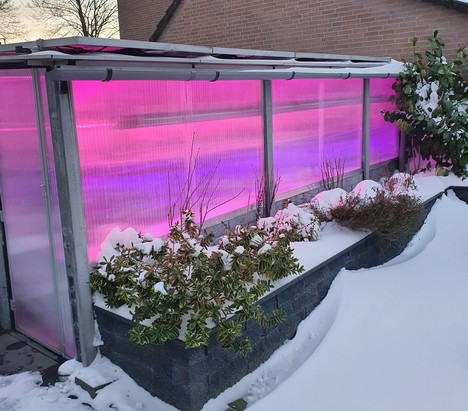
The greenhouse in February 2021
The fact that he is serious and that it is not just any old greenhouse, became clear when he gave an update last summer. There is now also a book entitled: 'The high-tech greenhouse. The greenhouse book '. It will appear at the end of March. Below is a preview, just after the first flowers appeared on the strawberry and pepper plants in his greenhouse in mid-February.
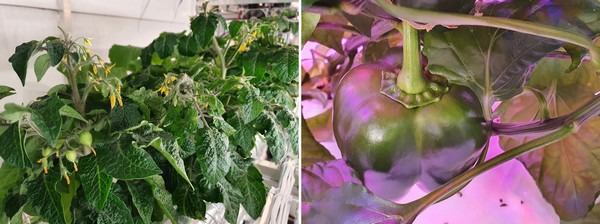
Theo is experimenting a lot, also with tomatoes and bell peppers
Unique tricks
But first a recap on the situation. It concerns a greenhouse that is 5 meters long, 2 meters wide and 2 meters high. The greenhouse is equipped with Chinese LED lamps selected by Theo himself, rainwater is collected in IKEA stacking bins and used in the greenhouse and perhaps most strikingly: the CO2 for the plants comes from Theo's house. The CO2 that Theo exhales in the house is measured and when the concentration increases during the day (> 700 ppm), a fan will suck the air out of the house. It is then made available for the greenhouse plants, which are then measurably benefiting from it, says Theo with satisfaction.
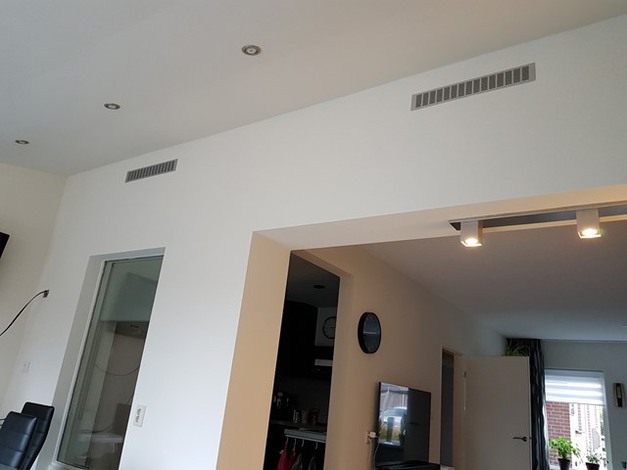
CO2 is sucked in from the living room
Technical dream project
The book, which Theo wrote during the construction process, is very extensive. All applied techniques are discussed, as well as all kinds of (cultivation) technical observations. If it's left up to Theo, the book will soon be suitable for educational purposes, because 'it is a technical dream project with all kinds of high-tech gadgets' in which 'all sorts of disciplines' come together.
Theo experienced the pros and cons of his special, but also very small project for 'greenhouse construction'. For example, materials in small quantities turned out to be relatively expensive to purchase and the consumer tariff for electricity was (and is) high. Solar panels help to reduce costs, because the panels supply during the day and the greenhouse uses them during the day.
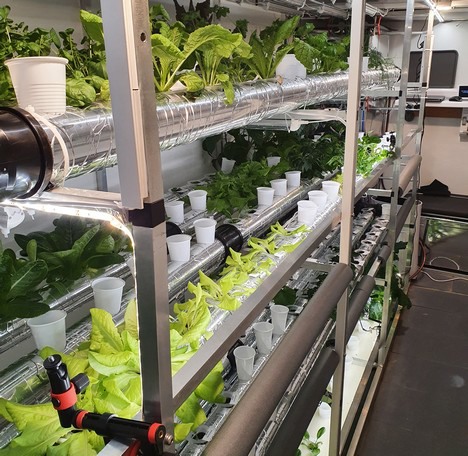
Various leafy vegetables in the greenhouse
At the same time, according to Theo, the small greenhouse is very suitable for experimentation precisely because of its size, structure and the fact that the greenhouse is located in the backyard, for example for schools. He discovered, for instance, that as soon as the lights in his greenhouse were switched on, the humidity increased and the CO2 content decreased. "That could argue in favour of not turning on the lamps at full power immediately, but gradually building it up in power. I think that could be more efficient."
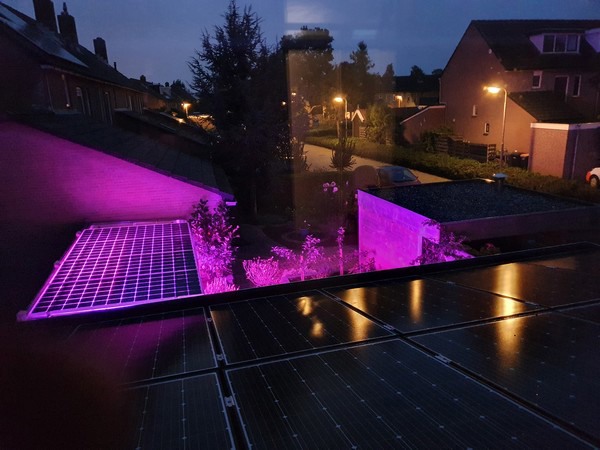
There are solar panels on the greenhouse, which is also equipped with roller blinds against the appearance (not yet here in the photo)
Spectrometry
In the book Theo pays a lot of attention to the scientific background of the effect of light. He has already experimented with growing with various colors of light and sees opportunities for research with short day, neutral and long day plants. To gain even more knowledge, the purchase of a spectrometer will follow shortly. "I still don't know if I can trust the spectrum."
Theo calls himself 'a technician with a deviation'. "I can certainly recommend a similar project like this to those who recognise themselves in this. But otherwise I would recommend taking the best things out of the book. And certainly not immediately spectrometry," he laughs.
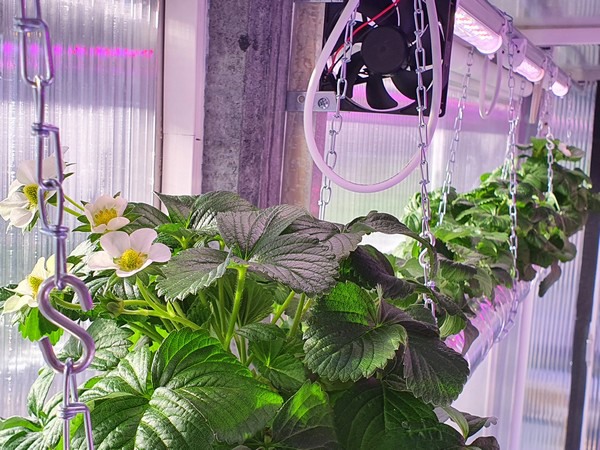
The new 'strawberry bar' on which Theo grows
Eaten empty 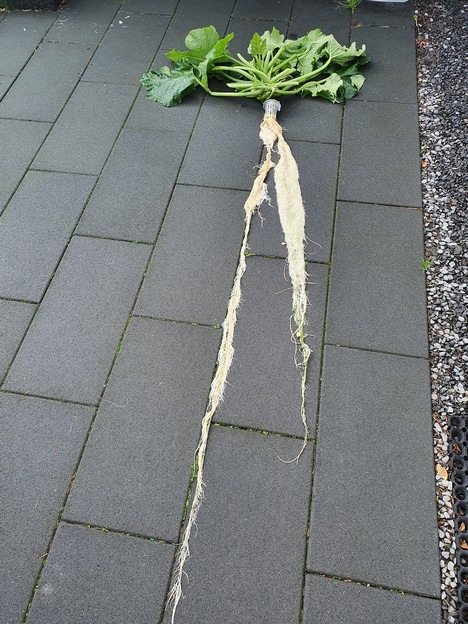
Fortunately, the greenhouse is not finished yet, Theo laughs. "There are still a lot of loose ends." He mentions measurement and control technology. "At the moment I still do a lot of manual work. Automation of pH and EC measurement has yet to be implemented. I also want to insulate the greenhouse even better and I expect to be able to save another ten percent on the consumption of the linked house-ground heat pump."
Photo right: Theo records everything, so also proud of the beautiful long, white roots
With much more knowledge of the specifications of the new lamps, Theo expects to be able to save 30 to 50% on electricity here. "These will be replaced soon, in order to work with higher efficiency and better colour combinations."
In addition, it is useful if the greenhouse is empty first. Or actually eaten empty. "A good Spanish acquaintance of mine already called my home-grown lettuce 'lovely lettuce'. A nice compliment, by which he meant that the lettuce is soft and deliciously tender."
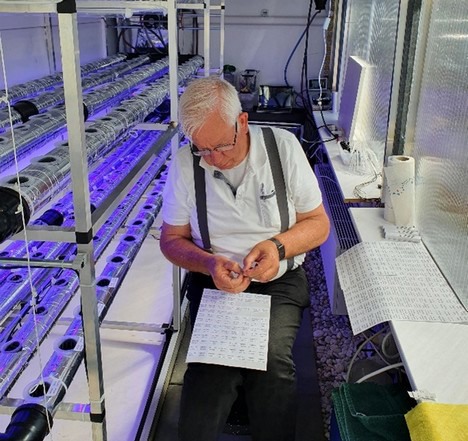
Labeling Theo in his greenhouse
Curious about the project and Theo's further progress? Then, in addition to the book ('The high-tech greenhouse', ISBN 9789462719170, 25 Euro), be sure to check out his website: www.hobbyvantheo.nl/. Theo can be reached by email at: info@hobbyvantheo.nl
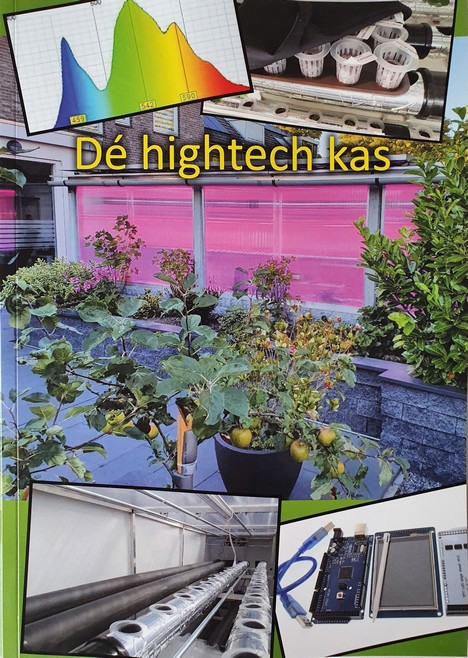
The book cover
